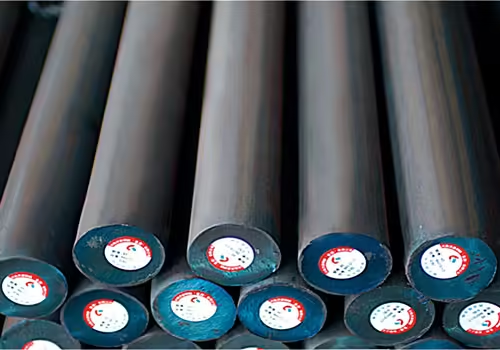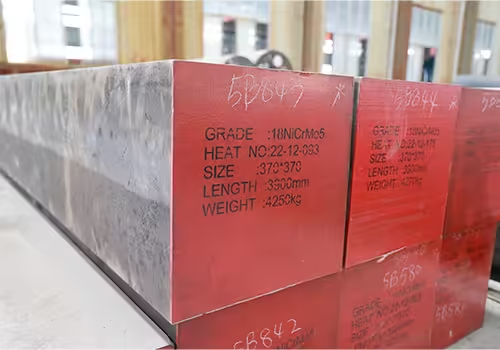
1020 Mild Steel Properties: A Must-Know for Builders
Table of Contents
Introduction


When it comes to construction and manufacturing, selecting the right material is crucial for ensuring durability, performance, and cost-effectiveness. One material that has stood the test of time is 1020 mild steel. Known for its versatility and reliability, 1020 mild steel is a popular choice among builders and engineers. But what exactly makes this material so special? In this blog, we will explore the 1020 mild steel properties in detail, providing you with a comprehensive understanding of its characteristics, applications, and advantages. Whether you are a seasoned professional or a novice in the field, this guide will equip you with the knowledge you need to make informed decisions.
What is 1020 Mild Steel?
1020 mild steel is a low-carbon steel that contains approximately 0.20% carbon. This low carbon content makes it more malleable and ductile compared to high-carbon steels, allowing it to be easily formed and welded. The chemical composition of 1020 mild steel typically includes:
- Carbon: 0.18-0.23%
- Manganese: 0.30-0.60%
- Phosphorus: 0.04% max
- Sulfur: 0.05% max
This combination of elements gives 1020 mild steel its distinctive properties, making it suitable for a wide range of applications in various industries.
Key 1020 Mild Steel Properties
Strength and Durability
One of the most important 1020 mild steel properties is its strength. While it is not as strong as high-carbon steels, 1020 mild steel offers a good balance between strength and ductility. This makes it suitable for applications where the material needs to withstand moderate stress and strain without breaking or deforming.
Malleability and Ductility
Thanks to its low carbon content, 1020 mild steel is highly malleable and ductile. This means it can be easily shaped, bent, and formed into various shapes without cracking or breaking. This property is particularly useful in manufacturing processes such as stamping, forging, and rolling.
Weldability
Another key 1020 mild steel property is its excellent weldability. The low carbon content reduces the risk of cracking and other welding defects, making it easier to join pieces of 1020 mild steel together. This property is essential for construction and fabrication projects where welding is a common practice.
Machinability
1020 mild steel is also known for its good machinability. It can be easily cut, drilled, and machined using standard tools and techniques. This property makes it a popular choice for manufacturing components and parts that require precise dimensions and tolerances.
Corrosion Resistance
While 1020 mild steel is not as corrosion-resistant as stainless steel, it does offer some level of protection against rust and oxidation. This property can be further enhanced through treatments such as galvanizing or coating, making it suitable for outdoor and marine applications.
Applications of 1020 Mild Steel


Construction
In the construction industry, 1020 mild steel is widely used for structural components such as beams, columns, and frames. Its strength, durability, and weldability make it an ideal material for building structures that need to withstand various loads and stresses.
Automotive
The automotive industry also benefits from the 1020 mild steel properties. It is commonly used to manufacture parts such as chassis, brackets, and suspension components. Its malleability and machinability allow for the production of complex shapes and designs.
Machinery
1020 mild steel is a popular choice for manufacturing machinery and equipment. Its good machinability and weldability make it suitable for producing gears, shafts, and other mechanical components that require precision and reliability.
Piping and Tubing
In the oil and gas industry, 1020 mild steel is often used for piping and tubing. Its strength and corrosion resistance make it suitable for transporting fluids and gases under high pressure and temperature conditions.
Furniture
The furniture industry also utilizes 1020 mild steel for creating frames, legs, and other structural elements. Its malleability allows for the production of intricate designs and patterns, while its durability ensures long-lasting performance.
Advantages of 1020 Mild Steel
Cost-Effectiveness
One of the main advantages of 1020 mild steel is its cost-effectiveness. It is generally more affordable than high-carbon and alloy steels, making it a budget-friendly option for various applications.
Versatility
1020 mild steel is a highly versatile material that can be used in a wide range of industries and applications. Its combination of strength, malleability, and weldability makes it suitable for everything from construction to manufacturing.
Ease of Fabrication
Thanks to its excellent machinability and weldability, 1020 mild steel is easy to fabricate. This property reduces production time and costs, making it a preferred choice for manufacturers and builders.
Recyclability
1020 mild steel is 100% recyclable, making it an environmentally friendly option. Recycling steel helps reduce waste and conserve natural resources, contributing to sustainable development.
Limitations of 1020 Mild Steel
Lower Strength
While 1020 mild steel offers a good balance of strength and ductility, it is not as strong as high-carbon steels. This limits its use in applications that require high strength and hardness.
Corrosion Susceptibility
Although 1020 mild steel offers some level of corrosion resistance, it is more susceptible to rust and oxidation compared to stainless steel. This necessitates additional protective measures in corrosive environments.
Limited Heat Treatment Options
Due to its low carbon content, 1020 mild steel has limited options for heat treatment. This restricts its ability to achieve higher levels of hardness and strength through thermal processes.
How Does 1020 Mild Steel Compare to Other Steels?
To better understand the 1020 mild steel properties, it is helpful to compare it to other commonly used steels. The following table provides a comparison of 1020 mild steel with other popular steel grades:
| Property | 1020 Mild Steel | 1045 Steel | 4140 Steel | Stainless Steel 304 |
|---|---|---|---|---|
| Carbon Content | 0.18-0.23% | 0.43-0.50% | 0.38-0.43% | 0.08% max |
| Tensile Strength | 420-790 MPa | 585-900 MPa | 655-950 MPa | 505-860 MPa |
| Hardness (HRC) | 111-149 | 149-192 | 197-229 | 70-90 |
| Corrosion Resistance | Moderate | Low | Low | High |
| Cost | Low | Moderate | High | High |
As the table shows, 1020 mild steel offers a unique combination of properties that make it suitable for various applications. While it may not excel in every category, its overall performance often makes it a preferred material for builders and manufacturers.
Heat Treatment of 1020 Mild Steel
Annealing
Before machining or forming, 1020 mild steel is typically annealed to improve its workability. The annealing process involves heating the steel to a specific temperature and then slowly cooling it to reduce hardness and increase ductility.
Normalizing
Normalizing is another heat treatment process that can be applied to 1020 mild steel. It involves heating the steel to a temperature above its critical range and then air cooling it. This process refines the grain structure and improves the material’s mechanical properties.
Case Hardening
While 1020 mild steel has limited options for heat treatment, it can undergo case hardening to increase its surface hardness. This process involves introducing carbon or nitrogen into the surface layer of the steel, followed by quenching and tempering.
Maintenance and Care of 1020 Mild Steel
Cleaning
To maintain the performance and longevity of 1020 mild steel, it is important to keep it clean. Regular cleaning with a mild detergent and water can help remove dirt and contaminants, preventing corrosion and rust.
Lubrication
Applying a thin layer of oil or lubricant to the surface of 1020 mild steel can help protect it from moisture and environmental factors. This is particularly important for outdoor and marine applications.
Coating
Coating 1020 mild steel with protective layers such as paint, powder coating, or galvanizing can enhance its corrosion resistance. These coatings provide a barrier against moisture and other corrosive elements, extending the material’s lifespan.
Conclusion
In conclusion, 1020 mild steel is a highly versatile and reliable material that offers a unique combination of properties. Its strength, malleability, weldability, and machinability make it suitable for a wide range of applications in various industries. While it may have some limitations, such as lower strength and corrosion susceptibility, its overall performance often makes it a preferred choice for builders and manufacturers.
By understanding the 1020 mild steel properties, you can make informed decisions and select the right material for your specific needs. Whether you are working on a construction project, manufacturing components, or creating furniture, 1020 mild steel is a material that can deliver the performance and durability you require. With proper maintenance and care, 1020 mild steel can provide long-lasting service, making it a cost-effective and sustainable option for your projects.
FAQ
What are the main 1020 mild steel properties?
The main 1020 mild steel properties include strength, malleability, ductility, weldability, machinability, and moderate corrosion resistance. These properties make it a versatile and reliable material for various applications.
Is 1020 mild steel suitable for outdoor use?
While 1020 mild steel offers some level of corrosion resistance, it is more susceptible to rust and oxidation compared to stainless steel. For outdoor use, additional protective measures such as coating or galvanizing are recommended.
Can 1020 mild steel be welded?
Yes, 1020 mild steel is known for its excellent weldability. The low carbon content reduces the risk of cracking and other welding defects, making it easier to join pieces together.
How does 1020 mild steel compare to 1045 steel?
1020 mild steel has a lower carbon content and tensile strength compared to 1045 steel. While 1045 steel offers higher strength and hardness, 1020 mild steel is more malleable and easier to weld and machine.
What are the limitations of 1020 mild steel?
The main limitations of 1020 mild steel include its lower strength compared to high-carbon steels, susceptibility to corrosion, and limited options for heat treatment. These factors restrict its use in certain high-stress and corrosive applications.






